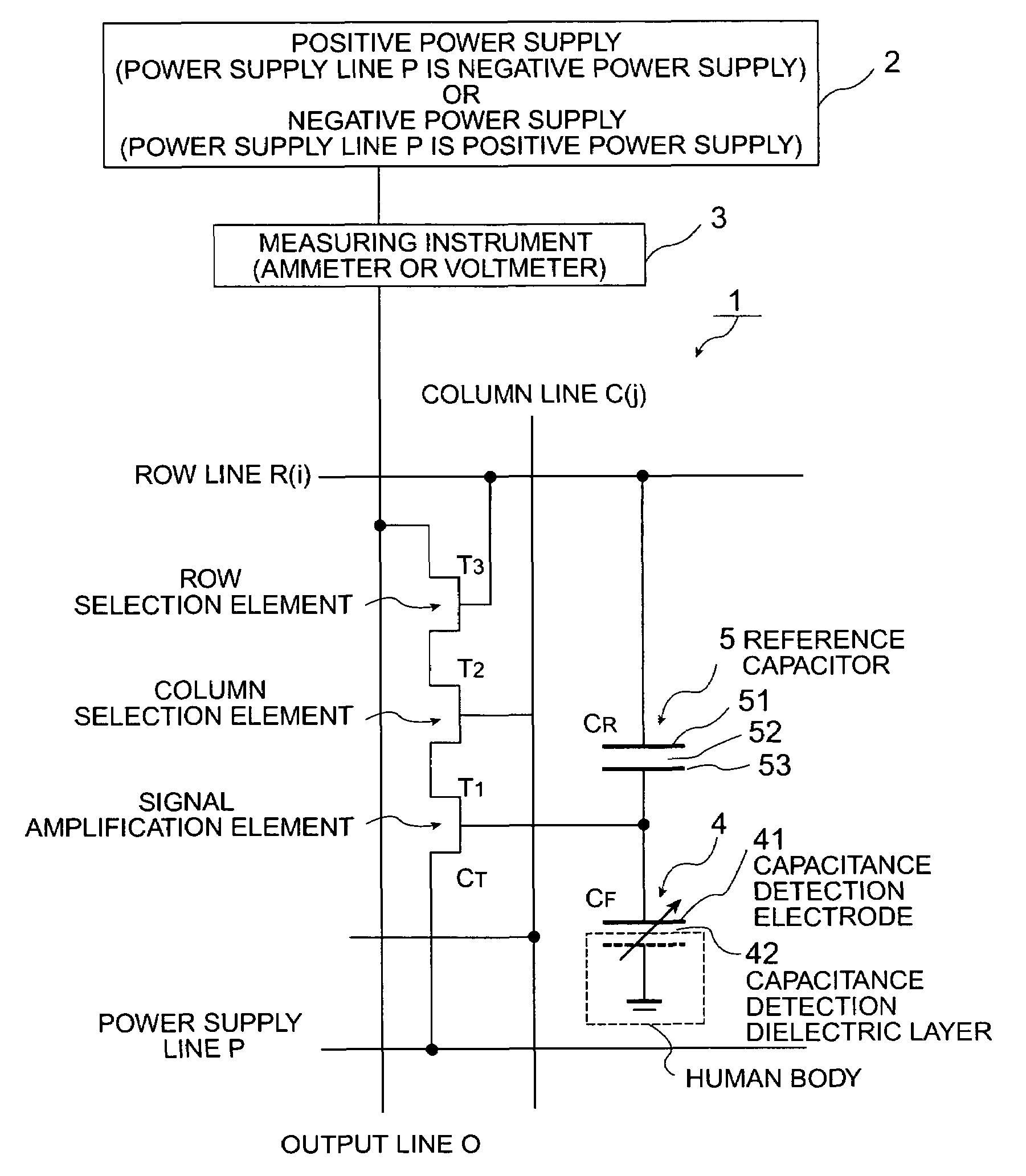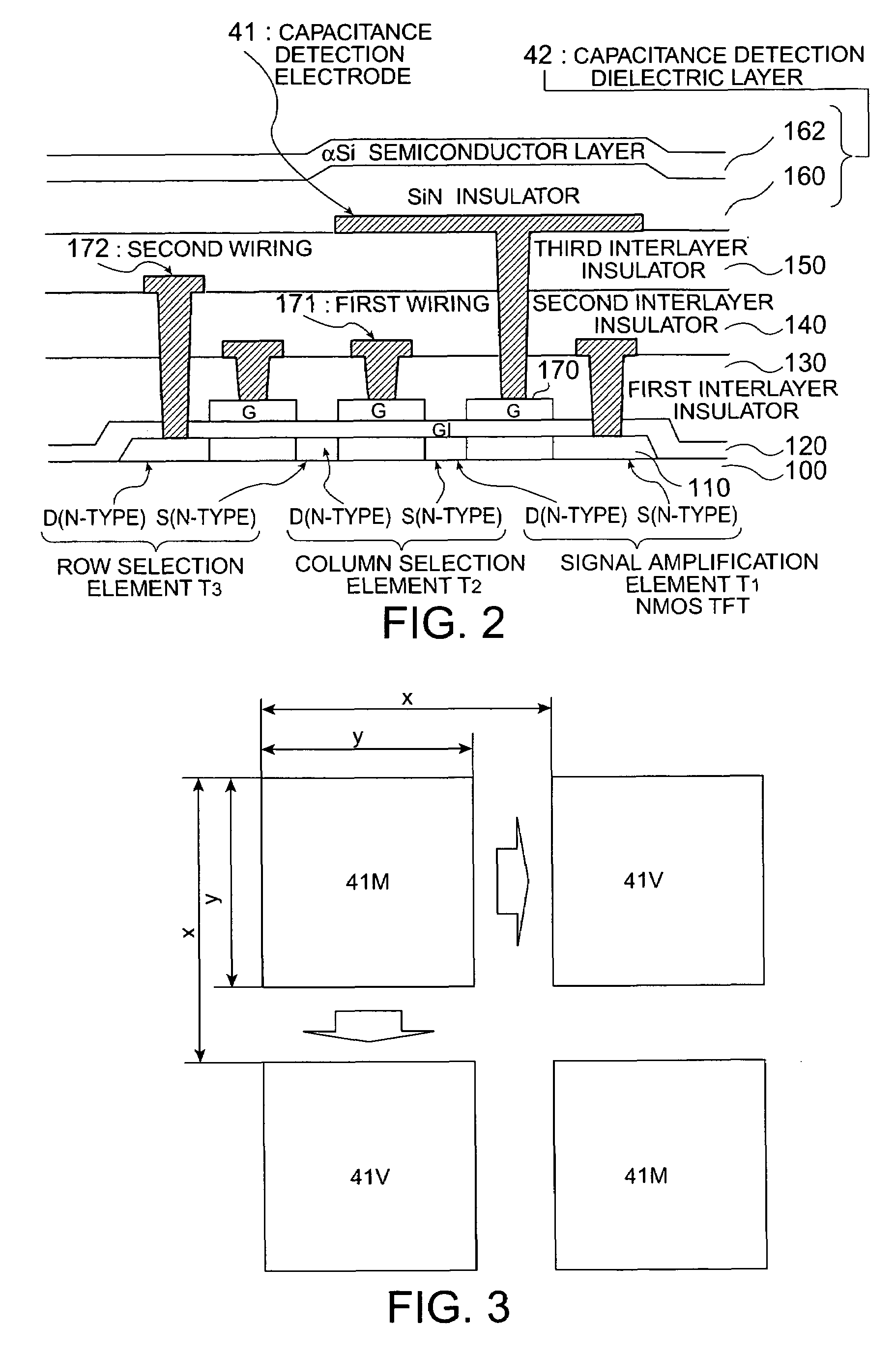Electrostatic capacitance detection device
a capacitance detection and electrostatic technology, applied in the direction of resistance/reactance/impedence, instruments, acquiring/reconforming fingerprints/palmprints, etc., can solve the problems of insufficient protective measures, dielectric layer breakage, and peripheral circuit breakage, etc., to improve durability, simple structure, and increase the thickness of the capacitance detection dielectric layer
- Summary
- Abstract
- Description
- Claims
- Application Information
AI Technical Summary
Benefits of technology
Problems solved by technology
Method used
Image
Examples
example 1
[0122]An electrostatic capacitance detection device made up of thin film semiconductor devices was fabricated on a glass substrate. The fabricated electrostatic capacitance detection device was then transferred to a plastic substrate using known transfer technology. The circuit configuration is the same as that in the embodiment. The electrostatic capacitance detection device includes electrostatic capacitance detection elements arranged in a matrix of 304 rows and 304 columns. The array is a square, 20 mm on a side.
[0123]Below, details will be described by corresponding to the layer structure shown in FIG. 2. The substrate 100, made of poly-ether-sulfone (PES), has a thickness of 200 μm. The signal amplification element T1, the column selection element T2, and the row selection element T3 are all fabricated with N-type thin film semiconductor devices. The thin film semiconductor devices are a top-gate type, as shown in FIG. 2. They are fabricated in a low-temperature process where ...
PUM
 Login to View More
Login to View More Abstract
Description
Claims
Application Information
 Login to View More
Login to View More - R&D
- Intellectual Property
- Life Sciences
- Materials
- Tech Scout
- Unparalleled Data Quality
- Higher Quality Content
- 60% Fewer Hallucinations
Browse by: Latest US Patents, China's latest patents, Technical Efficacy Thesaurus, Application Domain, Technology Topic, Popular Technical Reports.
© 2025 PatSnap. All rights reserved.Legal|Privacy policy|Modern Slavery Act Transparency Statement|Sitemap|About US| Contact US: help@patsnap.com



